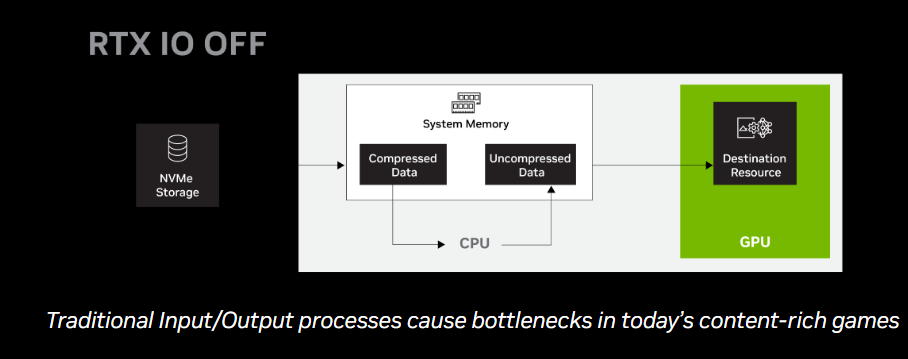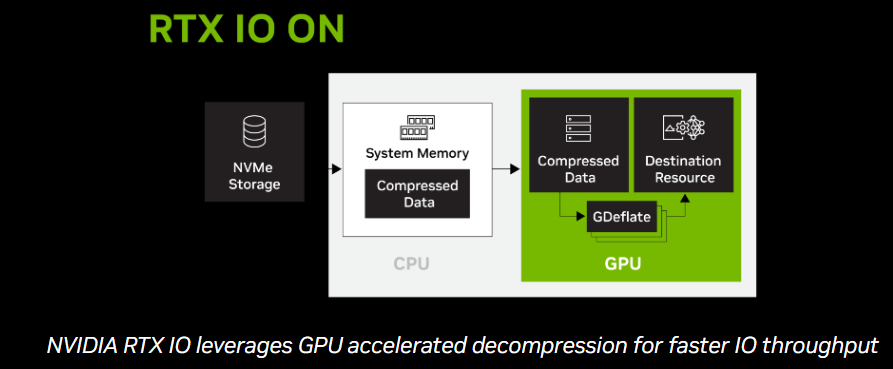One of the biggest upgrades to texture load times in years just debuted in a free Portal mod
GPU decompression is here, and you can try it for free with RTX IO in Portal: Prelude.

Portal: Prelude, a Portal mod made by Nicolas "Nyk018" Grevet, just received the RTX remaster treatment 15 years after its initial release. The mod now includes full path tracing, DLSS 3, and Nvidia Reflex support. It also achieves a first for PC gaming: it's the first game to support RTX IO, Nvidia's implementation of a new standard aiming to speed up texture loading times and reduce file sizes.
Portal: Prelude RTX is available from today over at Steam. Any RTX-branded GPU will seemingly be able to run the game—an RTX 2060 is the minimum requirement, though you'd likely require more power to really kick path tracing into overdrive.
The new release is not just a technical overhaul, either, there's new voice acting and new test chambers to get angry at included in the new and improved mod.
But the big thing is that RTX IO support, as this is the first game (mod) to ever support the new GPU decompression technology.
RTX IO is a way to shift the job of decompressing game assets, namely high resolution textures, from the CPU and instead give it to the GPU. This is done to reduce the time it takes to load textures in.
Take this cake from Portal: Prelude, shown in a test video from Nvidia. Without RTX IO, the cake's textures are fully loaded in 3:46 seconds.
With RTX IO enabled, the cake is loaded in 1:01 seconds—more than 3x faster.
Keep up to date with the most important stories and the best deals, as picked by the PC Gamer team.
RTX IO is Nvidia's way of implementing GDeflate on its own GPUs. GDeflate is an open source data compression scheme, which Nvidia created and is contributing elsewhere, and an important step in better utilising the hardware that most of us already have in our PCs. But to understand why that is you have to look into why today's CPU-based decompression isn't an ideal solution.
While playing a game, the CPU spends a lot of cycles dealing with compiling shaders, decompressing game data, and initialising game objects, as AMD outlines in a GDC presentation slide (PDF). The decompression tasks actually take up a lot of resources and system I/O bandwidth, and it's for this reason that shifting the busywork of decompression over to a GPU can actually benefit a user while gaming. With GPU decompression, a CPU is freer to work on other important tasks and you can avoid traditional bottlenecks.
"When applying traditional compression with decompression happening on the CPU, it’s the CPU that becomes the overall bottleneck, resulting in lower throughput than would otherwise be possible with uncompressed streaming," an Nvidia technical blog says. "Not only does it underutilize available I/O resources of the system, but it also takes away CPU cycles from other tasks needing CPU resources."
If you remove the decompression stage from the CPU, the game data still goes through the CPU and system memory, but the GPU can use its glut of cores to accelerate the decompression process.


If you're confused by how RTX IO fits in with all the other GPU decompression touting technologies, you're probably not the only one. A lot of companies have a part to play in implementing GDeflate and have their own spin of it. Essentially, both Microsoft's DirectX 12 and Khronos' Vulkan APIs support GPU decompression—Microsoft through DirectStorage and Vulkan through Vulkan extensions.
Nvidia, Intel, and AMD will all support GPU decompression, GDeflate, on their own graphics cards with driver support and associated technologies. In Nvidia's case, GeForce support is courtesy of what it calls RTX IO.

Best CPU for gaming: The top chips from Intel and AMD.
Best gaming motherboard: The right boards.
Best graphics card: Your perfect pixel-pusher awaits.
Best SSD for gaming: Get into the game ahead of the rest.
We're seeing Nvidia pushing the technology out first of all under its own banner thanks to the RTX Remix program, which gives it the flexibility to work with developers closely on a project like this. The first major game expected to support GPU decompression is Ratchet & Clank: Rift Apart, which will launch later this month with GPU decompression support courtesy of DirectStorage 1.2. That's more likely to support all GPU hardware in due time.
Though you probably need an NVMe SSD to really make the most of these new storage technologies. It's not a requirement, even Ratchet & Clank will work on a traditional hard drive, but the benefits will surely be muted by much slower storage technologies. No doubt it's a good time to upgrade to an SSD, if you haven't already.

Jacob earned his first byline writing for his own tech blog. From there, he graduated to professionally breaking things as hardware writer at PCGamesN, and would go on to run the team as hardware editor. He joined PC Gamer's top staff as senior hardware editor before becoming managing editor of the hardware team, and you'll now find him reporting on the latest developments in the technology and gaming industries and testing the newest PC components.

